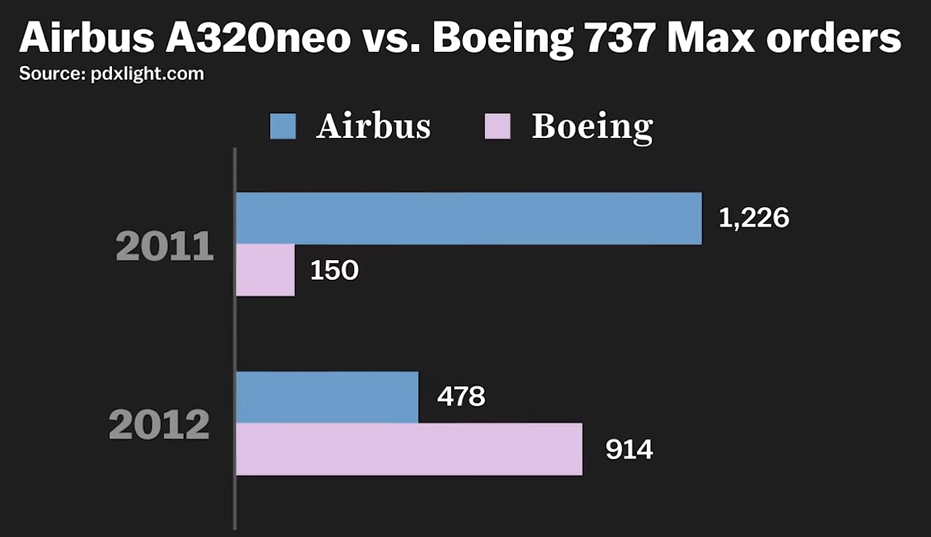On March 10, 2019, a Boeing 737 Max crashed on the ground 10 minutes after takeoff in Bishoftu, Ethiopia. 157 people died in the accident. A few months earlier, another Boeing-737 Max crashed in Indonesia, still a few minutes after take-off, killing the 189 people aboard the 610 Lion Air flight.
Since then, a judicial inquiry has been opened to determine Boeing’s responsibilities. Indeed, the two black boxes of the planes revealed almost identical behaviors. The planes simply took off after takeoff, without the crews have been able to correct their trajectory. That’s why the responsibility of the aircraft manufacturer seems to be engaged.
The eagerness to beat the competition of Airbus
In 2010, Airbus renewed its best-selling aircraft, the A320, a twin-engine aircraft carrying approximately 200 passengers over short and medium distances. The A320 Neo is equipped with more powerful jets, which allow him a fuel economy of 15%. The innovation does not require additional training for pilots who were already using the first A320, so airlines can save money.
Immediately, Boeing responded that it would have also improved the competitor of the Airbus A320, the Boeing 737, by increasing the power of its engines, while decreasing its consumption. As for Airbus, Boeing had guaranteed that no additional training would have been necessary, other than two hours of tablet training. Watch the sales of the Airbus A320 Neo in 2011, far surpassed by that of the new Boeing-737 Max in 2012:

The problem of the height of the 737 Max
Look at the picture below: the new Boeing-737 Max was too low to allow for larger and more powerful engines. Boeing would soon report that they had solved the problem.

A risky ploy
The solution: to advance the location of the new engine under the wings, so that it would be positioned higher. See the image below.

The stall problem
the progress of engines has nevertheless had an unexpected effect: the aircraft, during takeoff, tends to climb too vertically. A plane takes off and fly thanks to a depression that forms over their wings. Obviously, if it climbs with an angle too close to 90 °, the depression can not lift it, exerting a lateral thrust rather than upwards, as one approaches a completely vertical climb.
The Boeing solution, main cause of both accidents
Instead of re-designing the aircraft, Boeing has created software that automatically corrects the plane’s over-vertical flight path.
Boeing’s responsibilities
- Firstly, the two accidents demonstrated that this software, having to correct the trajectory of the aircraft on the basis of the indications provided by sensors, can force the aircraft to nose down, for example when the indications of the sensors are at fault.
- Second, if the software makes the plane nose down, there is a procedure for its trajectory. This highlighted two problems:
- this procedure did not work in the case of thedisaster in Ethiopia, as both pilots had executed it.
- worse, wanting to encourage airlines to buy a plane that, like its competitor Neo Airbus A320, does not require any additional training, Boeing had not even mentioned the existence of this software. This engages its responsibility and that of the United States Federal Aviation Administration (FAA) which had certified the aircraft.
The consequences for Boeing and private jets
All this casts a shadow over the reliability of airplanes and air transport in general, even undermining, albeit slightly, public confidence in the reliability of private jets.

